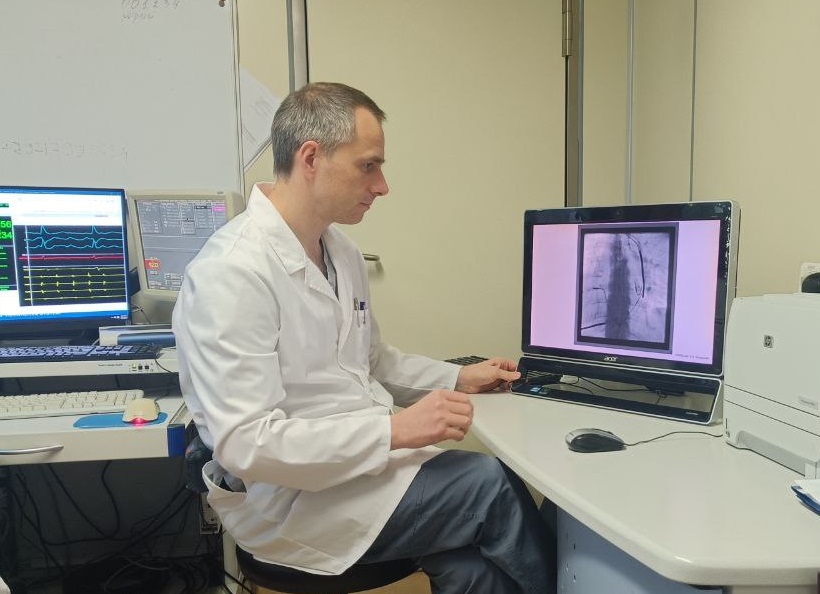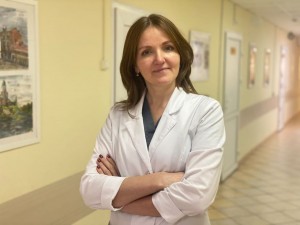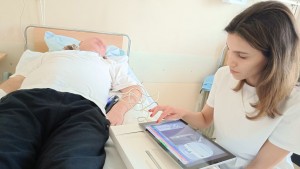
When Almazov Centre initiated the use of neurostimulation for the treatment of severe angina pectoris, the Russian Ministry of Health supported the idea. To date, specialists from five medical institutions in Russia have successfully performed 45 initial spinal cord electrical stimulation procedures to treat severe conditions associated with heart pain in patients with refractory angina pectoris who are not helped by conventional treatment methods – medical therapy and restoring cardiac blood flow. Based on the results of patient follow-up, a report will be submitted to the Russian Ministry of Health with a proposal to introduce neurostimulation into regular practice.
«This is a high-tech and expensive treatment that requires a team approach. Cardiologists, neurosurgeons, neurologists, cardiovascular surgeons, anesthesiologists and radiologists are all involved in the procedure,» said Professor Evgeny Mikhailov, the lead investigator.
«Coronary artery disease (CAD) is a condition in which there is an inadequate supply of blood to the heart muscle. It is caused by certain damage to the blood vessels of the heart. One form of coronary artery disease is angina pectoris, which causes chest pain or discomfort. According to statistics, coronary artery disease affects approximately 10% of the population. Of these, approximately 2-5% of patients do not respond to standard treatments, including medical therapy, surgery and endovascular restoration of blood flow. In these patients, it is reasonable to consider the implantation of a neurostimulator in addition to the methods described above. With a careful approach to the selection of candidates for neurostimulation, a significant positive effect can be achieved: some patients return to a completely normal life», — says Maria Bortsova, Head of Cardiology Department at Almazov Centre.

Maria Bortsova and Artem Paltsev
«The neurostimulation system is implanted under local anesthetic. Through punctures in the skin of the patient's back, thin electrodes are inserted into the spinal canal and guided to the upper thoracic segments of the spinal cord above its meninges. The neurostimulator itself is connected to the electrodes and implanted under the skin in the gluteal region. It is a minimally invasive and low-risk procedure,» said Dr. Artem Paltsev, Head of Neurosurgery Department at Almazov Centre.

Victoria Nezdorovina

Nigyar Gasymova
«The Polenov Neurosurgical Institute (branch of Almazov Centre) has been routinely performing neurostimulator implantations in the spinal cord and brain for several years. Specialists have gained considerable experience in the treatment of various neurological disorders using neuromodulation technologies, in particular movement disorders, epilepsy, pain, especially in chronic ischemia of the lower limbs. And now, thanks to the coordinated efforts of the multidisciplinary team, the neurostimulation method has been successfully introduced for the treatment of patients with severe forms of angina pectoris,» said Dr. Victoria Nezdorovina, Head of Neurosurgery Department.
«During implantation, the device is first activated and a number of stimulation parameters are set. The device is then fine-tuned over several days to select the most optimal stimulation mode for each patient. Sometimes an 'on demand' mode is required: the patient switches stimulation on and off using a personalized remote control. In some cases, continuous stimulation is required 24 hours a day. A reduction in the number of painful episodes in the heart, improved tolerance to physical activity and sometimes complete disappearance of painful episodes are the criteria for the effectiveness of neurostimulation in our patients,» says Nigyar Gasimova, a cardiologist at Almazov Centre, describing the parameters of individual system settings.
The most advanced treatment methods are developed and tested at Almazov Centre. The specialists at the Neuromodulation Research Laboratory use effects on the autonomic nervous system to correct blood pressure, treat cardiac arrhythmias, heart failure and coronary artery disease.
